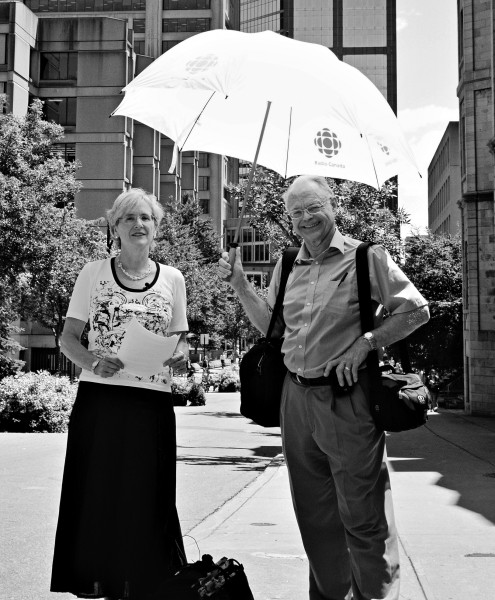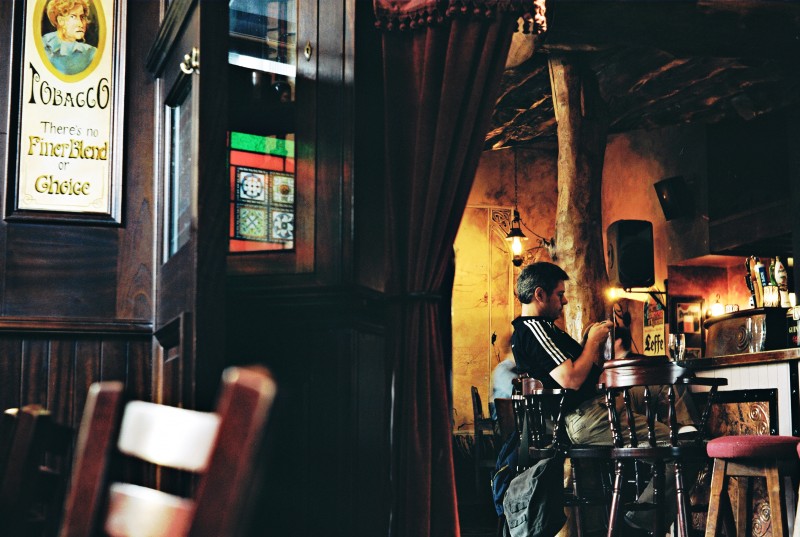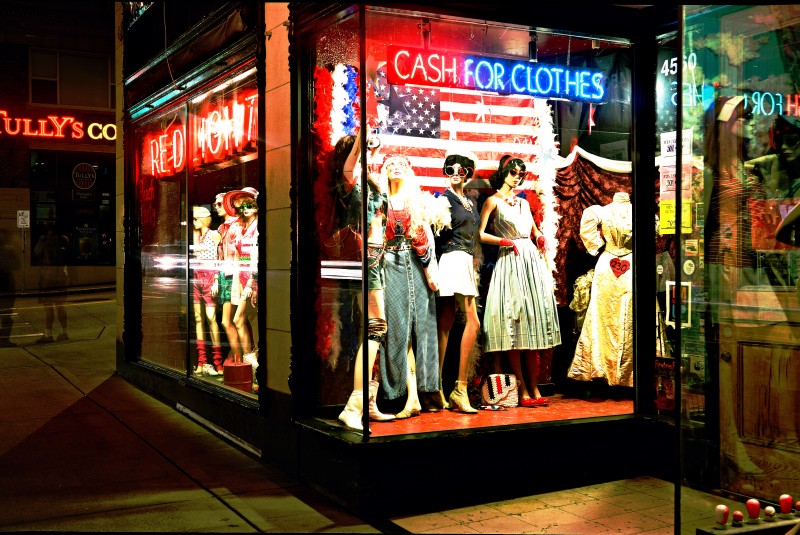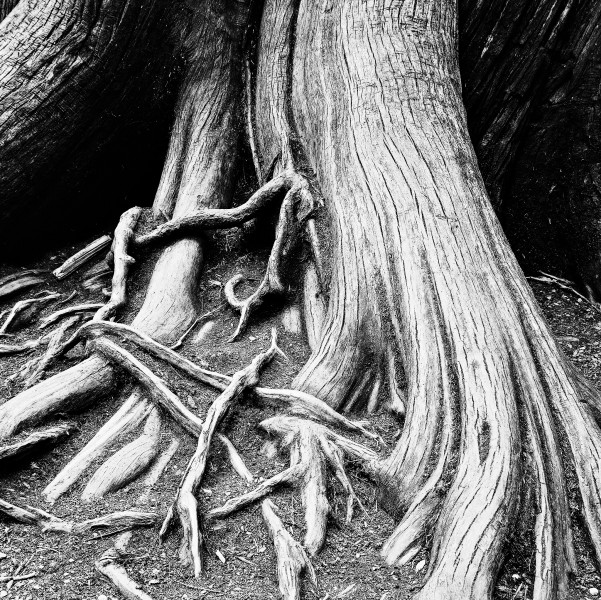
The Interview
We spend a lot of time behind the lens. Occasionally – and often because a classic camera attracts attention, and gives us a special legitimacy – we get a chance to become part of the action, and are privileged to be in the picture rather than watching it.
Wandering the streets of Montreal near McGill University, I chanced on one of the professors being interviewed. Sensing a photo opportunity, I brought out my Voigtlander, whose classic Art Deco lines caught the attention of the cameraman. As I caught this image, he saw a fellow professional, and turned to me, asking, “Say, would you mind holding this umbrella for me?”. I found myself standing next to the professor, just out of the frame, holding the umbrella to diffuse the scorching Montreal sun, as he said, “Just a little higher. Now a bit to the left… That’s it! Perfect! Now just hold it there…” as the professor read from her notes.
As the interview ended, I asked the cameraman if he would mind taking a picture of the two of us with the umbrella:

Rand and the Professor
My cameras bring me riches far beyond mere images. The greatest of these is the link with so many people and the adventures that come with them. Some are big adventures, like a magical night with Loretta Lynne’s family; others are small, like a chance encounter on a Montreal street. Yet all become colorful threads in the tapestry of my life, and I am richer for them. The cameraman told us that he recently became a Freelance Cameraman and was thoroughly enjoying his new career. He took some beautiful photos of us, and I knew he was going to be a successful professional photographer.
Photographer’s Note: Carry a notebook! Not only is this useful for recording places and exposures, it also provides a safe place to store names and addresses. Both the professor and the cameraman requested prints, and in the year it took me to review the scans, I lost their cards.





